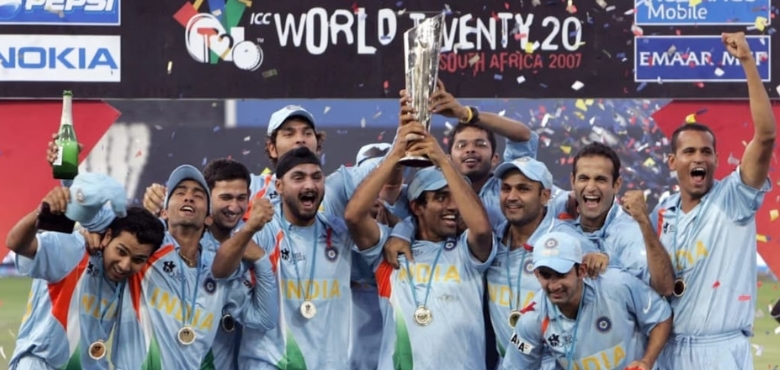Cricket, often referred to as “the gentleman’s game,” has a rich and storied history that spans centuries. From its early roots in medieval England to becoming one of the most popular sports globally, the evolution of cricket is a fascinating tale of cultural influence, global expansion, and enduring legacy. This blog will take you on a journey through the history of cricket, exploring its origins, key milestones, and the key moments that shaped the game we know today.
Early Beginnings of Cricket
Cricket’s origins trace back to the early medieval period in England. While the exact date is uncertain, it is believed that cricket was first played in the 16th century, possibly as early as the 1500s. The sport’s precursor was a simple bat-and-ball game, which evolved over time.
Cricket’s Medieval Origins
- 16th Century: The earliest reference to cricket can be traced back to a 1598 court case, where it was mentioned as a children’s game.
- Precursor Games: Cricket shares similarities with several games from this period, including “stoolball,” a sport played by women in England, and other forms of bat-and-ball games that were popular in rural communities.
Development in England
- By the 17th century, cricket had grown in popularity, with references to the game appearing in literature and art.
- 17th Century: The sport was increasingly played at local festivals, and various forms of the game began to emerge, including different ways to count runs and wickets.
- Evolution of Rules: The rules of cricket began to be formalized, and by the late 1600s, games were being played at village fairs and county-level competitions.
The Formation of Cricket’s Modern Rules
Cricket’s growth from a rural pastime to a formalized sport with standardized rules took place primarily in the 18th century. This was the period when cricket truly began to resemble the game we know today.
Introduction of the Laws of Cricket
- 1744: The first known code of laws for cricket was written by the famous Cricketer’s Club in London. These laws helped standardize the game and laid the foundation for its future development.
- Introduction of Overarm Bowling: By the mid-18th century, the practice of bowling overarm, rather than underarm, was established, creating a faster and more exciting game.
- The Formation of Key Terms: Many of the terms we use today, such as “wicket,” “batsman,” and “run,” were introduced during this time.
The Birth of County Cricket
- The 18th Century saw the rise of county cricket teams, including prominent clubs like Surrey, Kent, and Sussex, which established competitive fixtures.
- The First Ever International Match: In 1844, the first recorded international cricket match was played between Canada and the United States, setting the stage for future global competition.
Cricket’s Expansion: The Birth of Test Cricket
As cricket grew in popularity, it spread to various parts of the world, particularly to the British colonies. The game’s formalized rules and structures set the foundation for international competition.
Early International Tours
- 1877: The first-ever Test match was played between Australia and England at the Melbourne Cricket Ground (MCG). This historic match marked the beginning of what would become the Ashes series, one of the most iconic rivalries in cricket history.
- The Ashes: The name “The Ashes” was coined after a 1882 article in The Sporting Times, following England’s surprising defeat by Australia at The Oval.
Test Cricket’s Global Reach
- By the late 19th and early 20th centuries, cricket had expanded beyond England and Australia. India, South Africa, the West Indies, and New Zealand all established their own teams and began playing international matches.
- 1900s: The formation of the International Cricket Council (ICC) in 1909 marked the beginning of more organized international cricket competition, with the governing body overseeing global standards and tournaments.
The Rise of Limited Overs Cricket
While Test cricket had been the dominant format for over a century, the emergence of limited-overs cricket in the mid-20th century revolutionized the sport.
Introduction of One-Day Cricket
- 1963: The first One Day International (ODI) match was played between England and Australia. The concept of a limited-overs format brought excitement and faster-paced matches to the game.
- 1975: The inaugural Cricket World Cup was held in England, introducing the world to the thrills of ODI cricket. The tournament was won by the West Indies, and it firmly established one-day cricket as a popular format.
The 1980s and 1990s: The Rise of the IPL and T20 Format
- Twenty20 Cricket (T20) was introduced in the early 2000s as a shorter, more entertaining version of the game. Its debut in the 2003 ICC World Twenty20 led to a surge in popularity, especially among younger audiences.
- 2008: The launch of the Indian Premier League (IPL) further cemented T20 cricket as the future of the sport. This league brought together international cricketers in a high-paced, commercialized format that quickly became one of the most-watched sports events globally.
Modern-Day Cricket: The Global Phenomenon
Today, cricket is one of the most widely followed sports worldwide, with a massive fanbase across continents. Technological advancements, enhanced media coverage, and a changing cricketing landscape have transformed how the game is played and consumed.
Technological Innovations
- Hawk-Eye: Used for monitoring deliveries and umpire decisions, Hawk-Eye technology has brought unprecedented accuracy to the game.
- Decision Review System (DRS): Introduced in 2008, DRS has become a crucial aspect of modern-day cricket, helping umpires make more accurate calls, particularly with respect to LBWs and dismissals.
The Influence of the IPL and T20 Leagues
- 2010s and Beyond: The global spread of domestic T20 leagues, such as the Big Bash League (BBL) in Australia, Pakistan Super League (PSL), and Caribbean Premier League (CPL), has led to an explosion of cricket’s popularity. These leagues have helped cricketers make their mark globally, with massive commercial and sponsorship deals.
Cricket’s Impact on Global Culture
- Inclusion of Women’s Cricket: The inclusion of women’s cricket in international competition has been a transformative force, with the Women’s World Cup and Women’s T20 World Cup increasing in popularity.
- Globalization of the Game: Thanks to media coverage, cricket is no longer confined to traditional cricketing nations. Countries such as Afghanistan, Ireland, and the Netherlands are now key participants in global cricket events.
Cricket’s Enduring Legacy
From its humble beginnings in medieval England to its global appeal today, cricket has evolved into a sport that transcends national borders and cultures. The history of cricket is filled with countless memorable moments, iconic players, and historic matches that have shaped the sport as we know it.
As cricket continues to evolve, the fusion of tradition with innovation, as seen in formats like T20, ensures that the sport will remain relevant for generations to come. Whether through the thrill of a high-speed T20 match, the emotional tension of Test cricket, or the legacy of cricketing legends, the future of cricket promises to be as exciting as its storied past.
Key Milestones in Cricket History:
- 1598: First recorded mention of cricket
- 1877: First Test match played between Australia and England
- 1975: First Cricket World Cup held
- 2008: Launch of the IPL
- 2019: ICC Cricket World Cup sees England crowned champions
Stay updated with the latest Cricket News, Match Predictions, Fantasy Tips, and Live Cricket Action—only on Today Cricket Matches!

